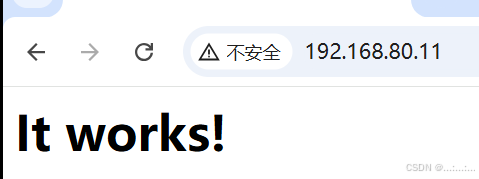Python数据结构高级:图的表示与遍历
一、图的基本概念
1.1 图的定义与分类
图(Graph)是由顶点(Vertex)集合和边(Edge)集合组成的数据结构,形式化表示为 G = (V, E)
主要分类:
- 无向图 vs 有向图
# 无向图示例:A-B-C # 有向图示例:A→B→C - 权重图 vs 非权重图
# 权重图示例:A-(5)-B-(3)-C # 非权重图示例:A-B-C
1.2 典型应用场景
- 社交网络:用户为顶点,关注关系为边
- 交通网络:城市为顶点,路线为带权边
- 知识图谱:实体为顶点,关系为边
- 推荐系统:用户-商品交互关系建模
二、图的表示方法
2.1 邻接矩阵
使用二维数组表示顶点间的连接关系
class AdjMatrixGraph:
def __init__(self, vertices):
self.size = len(vertices)
self.vertices = vertices
self.matrix = [[0]*self.size for _ in range(self.size)]
self.index_map = {v:i for i,v in enumerate(vertices)}
def add_edge(self, u, v, weight=1):
i = self.index_map[u]
j = self.index_map[v]
self.matrix[i][j] = weight
# 若是无向图需添加反向
# self.matrix[j][i] = weight
时间复杂度分析:
- 查询相邻节点:O(1)
- 遍历所有边:O(V²)
- 空间复杂度:O(V²)
2.2 邻接表
使用字典+链表存储连接关系(更节省空间)
from collections import defaultdict
class Graph:
def __init__(self):
self.adj_list = defaultdict(list)
def add_edge(self, u, v, weight=None):
self.adj_list[u].append((v, weight))
# 若是无向图需添加反向
# self.adj_list[v].append((u, weight))
时间复杂度分析:
- 查询相邻节点:O(1)平均
- 遍历所有边:O(V+E)
- 空间复杂度:O(V+E)
三、图的遍历算法
3.1 深度优先搜索(DFS)
def dfs(graph, start):
visited = set()
stack = [start]
while stack:
vertex = stack.pop()
if vertex not in visited:
print(vertex, end=' ')
visited.add(vertex)
# 逆序压栈保证顺序一致性
for neighbor in reversed(graph.adj_list[vertex]):
if neighbor[0] not in visited:
stack.append(neighbor[0])
应用场景:
- 拓扑排序
- 检测环路
- 寻找连通分量
3.2 广度优先搜索(BFS)
from collections import deque
def bfs(graph, start):
visited = set()
queue = deque([start])
while queue:
vertex = queue.popleft()
if vertex not in visited:
print(vertex, end=' ')
visited.add(vertex)
for neighbor in graph.adj_list[vertex]:
if neighbor[0] not in visited:
queue.append(neighbor[0])
应用场景:
- 最短路径查找(未加权图)
- 社交网络的好友推荐
- 网页爬虫的URL遍历
四、完整代码示例
class Graph:
def __init__(self):
self.adj_list = defaultdict(list)
def add_edge(self, u, v, weight=None):
self.adj_list[u].append((v, weight))
def dfs(self, start):
visited = set()
self._dfs_recursive(start, visited)
def _dfs_recursive(self, vertex, visited):
if vertex not in visited:
print(vertex, end=' ')
visited.add(vertex)
for neighbor in self.adj_list[vertex]:
self._dfs_recursive(neighbor[0], visited)
def bfs(self, start):
visited = set()
queue = deque([start])
while queue:
vertex = queue.popleft()
if vertex not in visited:
print(vertex, end=' ')
visited.add(vertex)
for neighbor in self.adj_list[vertex]:
if neighbor[0] not in visited:
queue.append(neighbor[0])
# 使用示例
if __name__ == "__main__":
g = Graph()
g.add_edge('A', 'B')
g.add_edge('A', 'C')
g.add_edge('B', 'D')
g.add_edge('C', 'E')
g.add_edge('D', 'E')
print("DFS遍历结果:")
g.dfs('A') # 输出:A B D E C
print("\nBFS遍历结果:")
g.bfs('A') # 输出:A B C D E
五、每日挑战:路径存在性判断
def has_path(graph, start, end):
visited = set()
stack = [start]
while stack:
current = stack.pop()
if current == end:
return True
if current not in visited:
visited.add(current)
for neighbor in graph.adj_list[current]:
if neighbor[0] not in visited:
stack.append(neighbor[0])
return False
# 测试用例
g = Graph()
g.add_edge('A', 'B')
g.add_edge('B', 'C')
g.add_edge('C', 'D')
print(has_path(g, 'A', 'D')) # 输出:True
print(has_path(g, 'D', 'A')) # 输出:False
算法选择建议:
- 最短路径问题 → BFS
- 拓扑排序 → DFS
- 存在性判断 → 两者均可
六、扩展应用
- 加权图的最短路径(Dijkstra算法)
- 最小生成树(Prim/Kruskal算法)
- 社交网络分析(使用NetworkX库)
- 图数据库应用(Neo4j的Python接口)
# Dijkstra算法示例
import heapq
def dijkstra(graph, start):
distances = {vertex: float('inf') for vertex in graph}
distances[start] = 0
heap = [(0, start)]
while heap:
current_dist, current_vertex = heapq.heappop(heap)
if current_dist > distances[current_vertex]:
continue
for neighbor, weight in graph[current_vertex]:
distance = current_dist + weight
if distance < distances[neighbor]:
distances[neighbor] = distance
heapq.heappush(heap, (distance, neighbor))
return distances
学习建议:
- 使用可视化工具(如Graphviz)辅助理解
- 在LeetCode上练习相关题目(如207.课程表、133.克隆图)
- 阅读NetworkX库源码学习工业级实现
- 尝试实现A*算法等高级图算法
掌握图的表示与遍历是理解复杂算法的基础,后续可继续学习强连通分量、最大流等高级主题。

![BUUCTF--[极客大挑战 2019]RCE ME](https://i-blog.csdnimg.cn/direct/6174113250184faebf12b55afb746cc3.png)


![[C++]使用纯opencv部署yolov12目标检测onnx模型](https://i-blog.csdnimg.cn/direct/27ea19d1b7244a71867c5ced540492ac.png)














